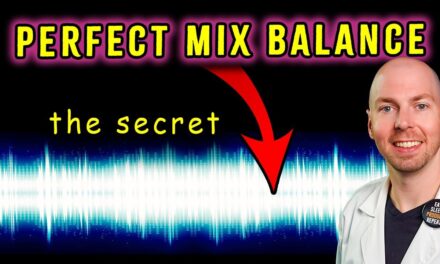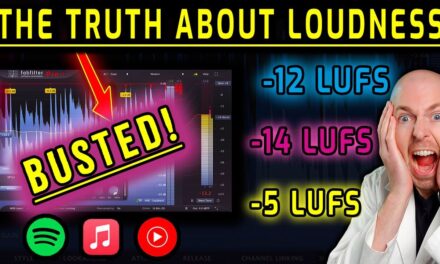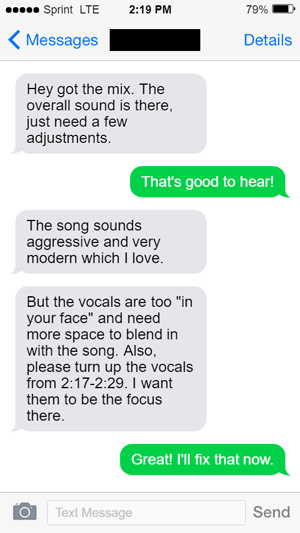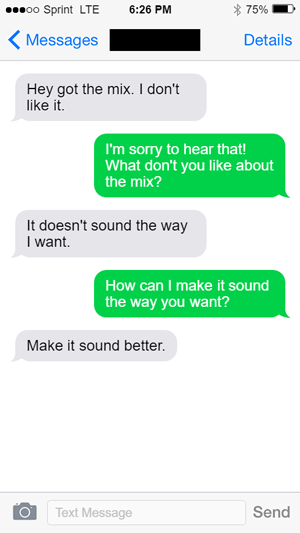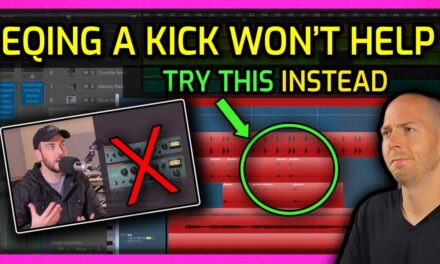
Get Better Mixes Faster [Part 2/3]: How to Write the Best Mix Notes for Online Mixing and Mastering
![Get Better Mixes Faster [Part 2/3]: How to Write the Best Mix Notes for Online Mixing and Mastering](/blog/s/img/wp-content/uploads/2018/10/RP-Blog-Get-Better-Mixes-Faster-Part-2-Writing-Best-Mix-Revision-Notes-1100x640.jpg)
WHEN YOU RECEIVE YOUR FIRST MIX OR MASTER BACK TO REVIEW
You worked hard to record your musical masterpiece and thought you hired the right mixing and mastering engineer for your songs. But after getting the first mix back, you start to question your choice. What’s your next move? Ask for a refund?Hire a new engineer? Do it yourself?
Don’t give up hope yet! Below, we discuss the most important things to consider when listening to the first mix you receive from your engineer. We also provide you with a framework to write clear, organized, and concise mix notes that will get your engineer on the same page as you.
What Part 2 Covers:
- Time saving hacks to get your song adjusted quickly with minimal mix revisions.
- How to define ambiguous words used to describe your music (warmth, boom, buzz, crunch, sizzle)
- Importance of providing both reference mixes of the same song and from other artists/bands you admire.
- Why you should start mix revision notes with broad adjustments first before diving down into the minutiae.
- The necessity for constructive feedback.
Listen on multiple speaker systems
Before jumping the gun and responding with an e-mail saying you love or hate the mix/master, listen to your song on multiple sources (headphones, car, cell phone, computer speakers, etc). Most people listen to their music in their car, so that is a GREAT way to compare the song you received to songs you know and love. Then sleep on it and listen to it again in the morning to see if your thoughts on the mix or master changed. Listening to your song on many devices and places is very important because your fans will most likely not be listening to your music the same way you are! Good mixes will sound great on all different speaker systems – not just a few. Make sure the mix doesn’t fall apart when it’s played through earbuds or in your car!
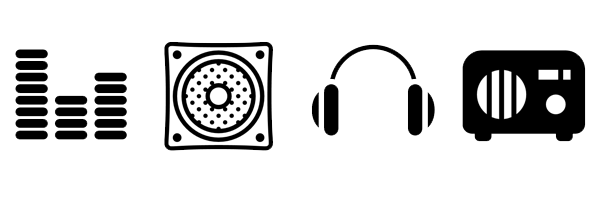
Mix notes: Start with what you like about the song mix or master
A good rule of thumb is to start the mix revision process is with a complement about you like and/or appreciate about the mix or master. This builds trust and confidence between both the artist and engineer. In addition, this allows the engineer to focus completely on the problem areas of the mix or master and not question if other areas of the song need more work.
Focus on the big picture
When trying to convey your musical vision to your engineer, try starting with the big picture, then get more focused. For example, if your vision is a super modern bright pop mix, then start by mentioning that first. If you describe each element of the song as being too dark or not bright enough, the engineer can feel overwhelmed and may over complicate their mixing strategy. Focusing on the big picture often guides the engineer to a simpler (and faster) solution. Please refer to Part 1 of this series for more info about the mixing funnel.
Once the big picture is laid out, then talk about the elements you want adjusted. Provide track times if there is a specific part you want changed. For example, if you want a guitar riff louder or the drums quieter over the 3rd prechorus, say “at 3:12 – 3:29, reduce the volume of the guitar” instead of “in the 3rd prechorus, reduce the guitar”. Remember as an engineer, we don’t know how you name the different parts of your songs. There is no confusion when a time is provided.
Define Your Words
Minimize ambiguity with words used to describe sound by providing examples of what you mean. For example, if you think the guitars sound too fizzy, find an example of guitars that are too fizzy sounding to you and either send the file or provide a link for your mixing or mastering engineer. Fizzy can mean a lot of things to different engineers, and without an example, the engineer is left guessing what you mean. Same goes for other words such as “warm, bright, deep, boomy, crunchy, etc.” – provide examples of what these words mean to you!
Provide constructive Feedback
Be sure that any feedback you provide to your mixing or mastering engineer identifies both the problem with the song mix and also provide insight as to WHY you want it changed. Having some context for why the adjustment should be made allows an engineer to see from your perspective and make better mixing or mastering decisions. The absolute worst thing you can do is say you don’t like something and don’t provide any constructive feedback.
This feedback is great – it presents the adjustments needed and WHY they should be changed. It also gives the exact time in the song for the other mix adjustment.
This feedback won’t help your mixing or mastering engineer get the sound you want. It doesn’t provide any constructive feedback about how the mix differs from the artist’s vision.
WHat if the mix is WAY off the mark?
If the mix or master is not even close to what you had in mind, it might be better to call or Skype the engineer if they are available to chat. E-mails can often be hard to understand and having a conversation makes it easier to clarify what the real issues are. The challenge is finding a time where both of you can chat. This can be difficult when working with engineers in other countries.
A solution to this problem is a hybrid of e-mail and a phone conversation – VOICE NOTES! I recently worked with an artist who sent voice notes for all the mix revisions, which allowed him to sing the specific parts he wanted changed. No amount of e-mails would have given me the clarity I needed to capture his vision of the song. This is now my preferred method for mix revision notes.
Don’t be afraid to call or Skype your engineer! Most of the time it’s faster to have a conversation about your mix notes than to describe them in an e-mail.
What’s in part 3?
In part 3, we give you several things to AVOID AT ALL COSTS when working with an online mixing or mastering engineer.
COMING NEXT WEEK!
If you liked this video tutorial, please share it with others that are making music.
How to do you send mix notes to your mixing or mastering engineer? Let us know in a comment below!

